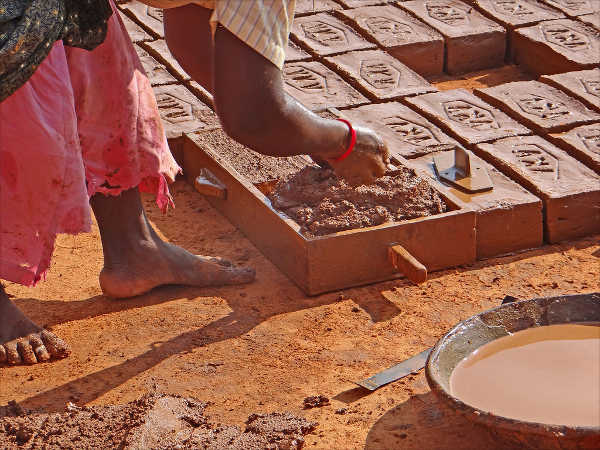FWP:
For background see S. R. Faruqi's choices. This verse is NOT one of his choices; I thought it was interesting and have added it myself. For more on Ghalib's unpublished verses, see the discussion in {4,8x}.
On the nuances of pusht-e dast-e ((ajz , see {155,3}. On the 'embrace of leave-taking', see {57,6}. The excellent paimaanah with its meanings of both 'measure of capacity' and 'cup, goblet' (see the definition above) also works well, uniting the architectural imagery with the 'torrent, flood'.
Every brick, lying flat and prostrate along the ground, is (like) a helpless, submissive hand; every framework with its scaffolding that surrounds a space within it is (like) an embrace opened for leave-taking. Every act of building invites-- or even provokes, if we take {10,6} seriously-- its own ruin. And by framing the second line as a question, the verse invites us to think of our own 'construction', and our own built-in doom. It pretends not to know, but of course it does. (Think of the innocent-sounding kis kii in the first line of {1,1}.)
It's depressing to notice that 'natural poetry' commentary like Zamin's begins cropping up from the very first ghazal. For the record, please note that the fact that a ghazal poet has often used some theme does NOT show that the theme is part of his autobiographical 'real life story'.
Compare also the brick-making in {251x,2}. A more metaphysical brick-mould (but with even more human-body associations) appears in {428x,6}.

Asi:
Having seen this situation, he asks in amazement, 'Which construction has the flood destroyed, that every aspect of the construction is in this state of grief?'
== Asi, pp. 49-50